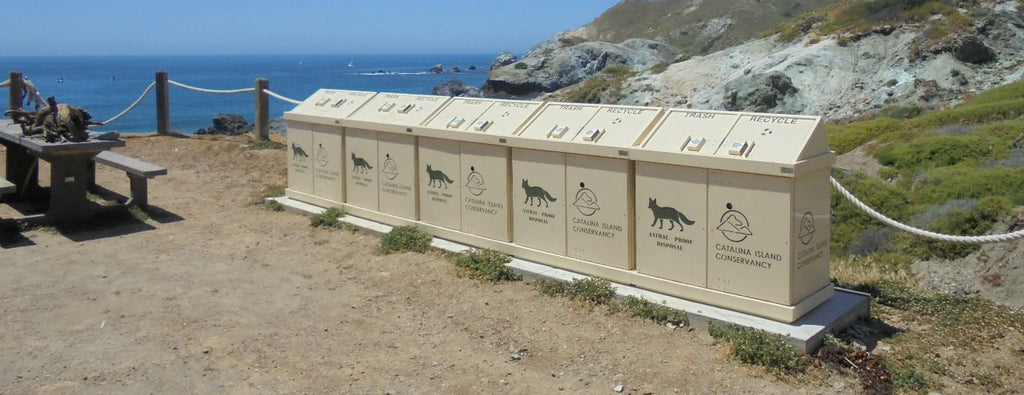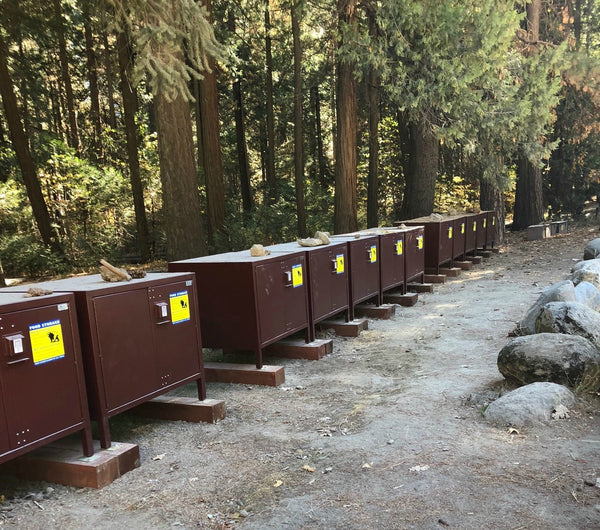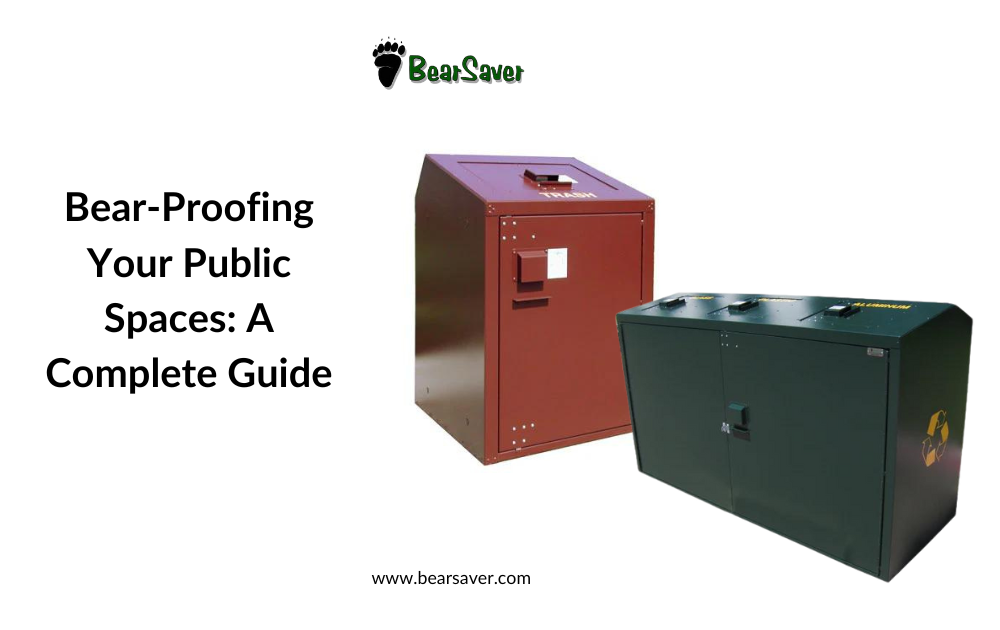News
Preventing Raccoons, Rodents, and Other Pests with BearSaver Cans
Posted by Securr Blogger on
Dealing with raccoons, rodents, and other pests rummaging through trash can be a persistent problem in both public and commercial spaces. These crafty critters pose a threat not only to cleanliness but also to public health, as their scavenging can spread waste and attract even more unwanted animals. Fortunately, BearSaver offers an effective solution with its line of animal-proof trash cans and recycle bins, designed to keep pests at bay while maintaining a clean, safe environment. Why Pest Control Is Crucial in Public and Commercial Spaces Whether it's a local park, campground, or a commercial establishment like a restaurant or shopping center, pest control is a top priority. Overflowing or accessible trash invites animals like raccoons, rats, and even larger pests such as bears, posing risks such as: Contamination: Pests can spread harmful bacteria and diseases through contact with trash. Property Damage: Animals digging through trash may cause damage to structures or landscapes. Health Concerns: Public health can be compromised...
The Importance of Wildlife-Resistant Recycle Bins in Eco-Conscious Communities
Posted by Securr Blogger on
As eco-conscious communities grow, so does the need for waste management solutions that are not only sustainable but also protective of local wildlife. Public spaces like parks, campgrounds, and neighborhoods often face challenges when it comes to keeping wildlife out of waste and recycling bins. Animals are naturally attracted to the smell of waste, which can lead to disruptions, pollution, and even dangerous encounters. This is where wildlife-resistant recycle bins come into play. Specifically, BearSaver’s animal-proof trash cans and recycle bins have become essential tools for eco-friendly communities looking to balance sustainability with wildlife protection. Why Wildlife-Resistant Recycle Bins Matter Communities that prioritize eco-conscious practices understand the importance of proper recycling. However, standard recycling bins are vulnerable to wildlife interference, leading to littering, contamination of recyclables, and harm to animals. Protecting WildlifeBy using wildlife-resistant recycle bins, communities can minimize the risk of animals accessing and ingesting harmful materials. For example, bears, raccoons, and even birds are drawn to food waste...
Top 3 Features to Look for in an Animal-Proof Trash Can
Posted by Securr Blogger on
When it comes to keeping public spaces, parks, and commercial areas free of wildlife disturbances, choosing the right animal-proof trash can is crucial. Not only do these trash cans help keep animals out of waste, but they also prevent litter from scattering, protect the environment, and reduce the likelihood of human-animal conflicts. At BearSaver, we understand the importance of reliable and durable trash cans that are designed to withstand even the most determined animals. Here are the top three features to look for when selecting an animal-proof trash can, along with why BearSaver products are the best choice for public and commercial use. 1. Sturdy Construction and Durable Materials One of the key features of any animal-proof trash can is its construction. It needs to be built from heavy-duty, durable materials that can withstand harsh weather conditions, daily use, and most importantly, persistent animals like raccoons, squirrels, and even bears. Look for trash cans made from high-gauge steel or heavy-duty...
From Parks to Campgrounds: The Versatility of BearSaver Cans
Posted by Securr Blogger on
When it comes to maintaining cleanliness and safety in public spaces, BearSaver's animal-proof trash cans and recycle bins are leading the charge. Whether it’s a bustling city park, a serene campground, or any other public area, BearSaver's products offer exceptional versatility and reliability. Here’s how BearSaver’s innovative waste management solutions stand out in various public settings. 1. City Parks: Balancing Cleanliness and Wildlife Protection City parks are vibrant hubs of activity, attracting visitors from all walks of life. However, they also draw in wildlife looking for easy food sources. BearSaver's animal-proof trash cans are designed to keep unwanted wildlife at bay while ensuring the park remains clean and welcoming. These cans feature sturdy construction and secure locking mechanisms that prevent animals from accessing the contents, reducing the risk of littering and mess. 2. Campgrounds: Enhancing Visitor Experience and Safety Campgrounds are popular destinations for nature enthusiasts and families seeking adventure. Yet, the presence of food scraps and waste can attract...
Bear-Proofing Your Public Spaces: A Complete Guide
Posted by Securr Blogger on
When designing public and commercial spaces, ensuring they remain clean, safe, and wildlife-friendly is a top priority—especially in areas where bears are present. A common challenge in parks, nature reserves, and outdoor commercial venues is preventing wildlife from accessing waste. Improperly managed trash not only attracts bears but can also lead to human-bear conflicts, property damage, and environmental hazards. That’s why bear-proofing your public spaces with BearSaver’s animal-proof trash cans and recycle bins is essential. Why Bear-Proofing Matters Bears are intelligent and persistent creatures. Once they learn they can access food from human trash, they will return repeatedly, often bringing danger to themselves and the public. This can result in dangerous interactions, wildlife habituation, and, sadly, bears being euthanized when conflicts escalate. By bear-proofing your public space, you minimize these risks and promote a harmonious coexistence between humans and wildlife. BearSaver: The Ultimate Solution for Public and Commercial Spaces BearSaver, the industry leader in animal-proof waste management, provides durable and...





